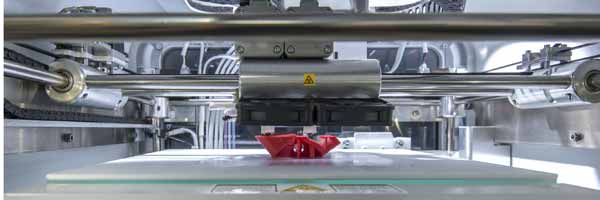Why 2016 Will Mark the Beginning of Manufacturing as a Service (MaaS)
In 2016, manufacturing as a service will change how goods are made around the world.
First, what is MaaS?
Manufacturing as a service is the shared use of a networked manufacturing infrastructure to produce goods. In other words, manufacturers use the internet to share manufacturing equipment in order to reduce costs and make better products.
MaaS relies on “cloud networked manufacturing”. We’ll use the example of cloud computing to explain. Cloud computing provides on-demand access to shared computing resources: software, hardware, data and more. When a company uses Google’s business services like Gmail and Drive, for example, the company doesn’t buy or maintain its own servers. The cost of servers and infrastructure is shared across all of Google’s customers.
The same concept applies in manufacturing as a service. The cost of the manufacturing infrastructure—machines, maintenance, software, networking and more—is distributed across all customers. This leads to a number of benefits: lower manufacturing costs, greater uptime for each machine, and greater manufacturing capacity for each company, for starters.
Likewise, all customers benefit from the expertise of their manufacturing service partners. MaaS partners like ProtoCAM instantly give you the intelligence and know-how they’ve built over thousands of projects. They create the highest quality products for your business using specialized manufacturing techniques. ProtoCAM has over 20 years of experience—additive manufacturing expertise that you can’t just hire into your business.
Up until now, manufacturing as a service has existed mostly as an idea. Some experiments have been made, but MaaS hasn’t been implemented on a large scale. That’s all going to change in 2016. Here’s why:
More Machines Will Be Connected to the Internet
Manufacturing as a service relies on real-time insight into the status of manufacturing equipment. And in order to get that data, machines must be connected to the internet. The natural growth of existing communication networks will help to bring more machines online.
Connectivity soon will be compounded by new networking technologies. Google’s “Project Skybender” hints at wireless networks up to 40 times faster than 4G. Laser beams and microwaves currently transmit financial data faster than fiber optic cables, and could be applied to the manufacturing cloud. They might facilitate communication and support new markets for buying and selling production capacity.
More Data and Insight Into the Status of Each Machine
Inside the machines themselves, new sensor technology will boost the amount of data provided to the manufacturing cloud. Sensors for other data, such as weather, atmosphere, warehouse capacity, distribution capacity, and material quality will also be valuable to the software-assisted decisions made in the manufacturing cloud.
As networks get faster and denser, machines will be able to provide more data about their statuses to the manufacturing cloud. This may include data on lifetime manufacturing history, error rates, service histories, upcoming reservations, manufacturing environmental conditions (vibration, etc.) and more. This data will encourage the development of programs to help manufacturers decide when and where to make their products.
Artificial Intelligence (AI) for Product Design
AI is being applied to product design to create optimal outcomes—strength, weight, cost—any improvement can pursued. AI is ready to take in manufacturing cloud data, such as the machine data described above, and use this to help design the best product for the moment. If there’s a surplus of a certain type of plastic, for example, AI could test if this substitute will be acceptable, then switch a product’s design to use this material and reduce cost.
More Employee Data in the Cloud
Machines need to be operated and maintained by people, and more companies’ HR data is being maintained on the cloud. Individual and team data points like availability, job history, certification, work speed, error rates and more will be used to help route manufacturing work to the best production site.
Easier Ordering (More Information on Customer Demand)
Manufacturers will be able to offer more customization options to customers over the internet. Customers will continue to become comfortable buying just about anything online, from trucks to medical devices to infrastructure equipment. The increased sophistication of configure-price-quote software will power this trend, especially as CPQ software rolls out guided interfaces for the end-user customer.
Third-party marketing and distribution companies will help to harness market demand. This model may work in a similar way to the current drop shipping and build-on-demand models. Marketing specialists will promote products online, collect customized orders, and pass these to manufacturers.
These specialists will work as a new type of internet-based manufacturer’s representative, offering a lineup of competing products side by side to deliver comparisons that don’t currently exist. The MaaS cloud will facilitate more accurate pricing, too, which will help shorten the sales cycle and allow orders to be placed online, rather than the quote requests which are common today.
2016 promises to bring a convergence of innovations in the internet of things, online HR data, and online marketing. Together, these will help bring widespread adoption of manufacturing as a service.
Are you ready to explore working with an additive manufacturing specialist for your products? Contact us here, or go here to request a quote.

